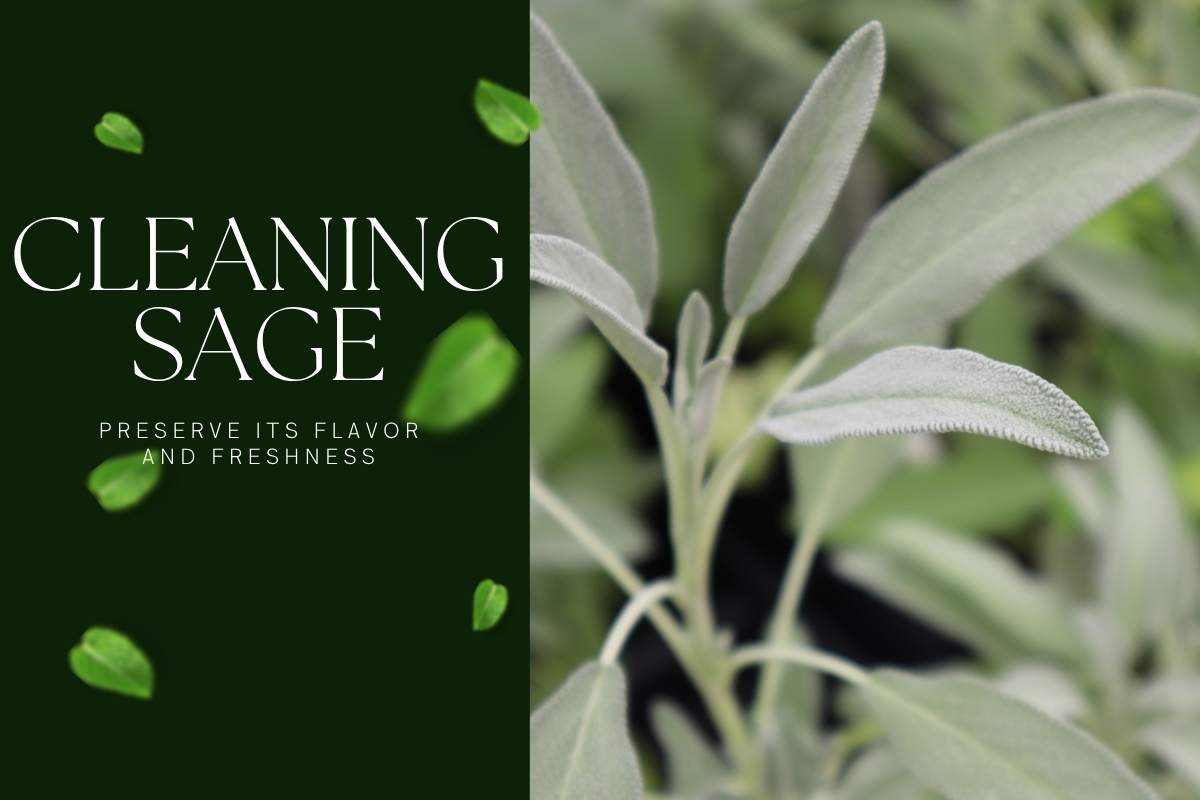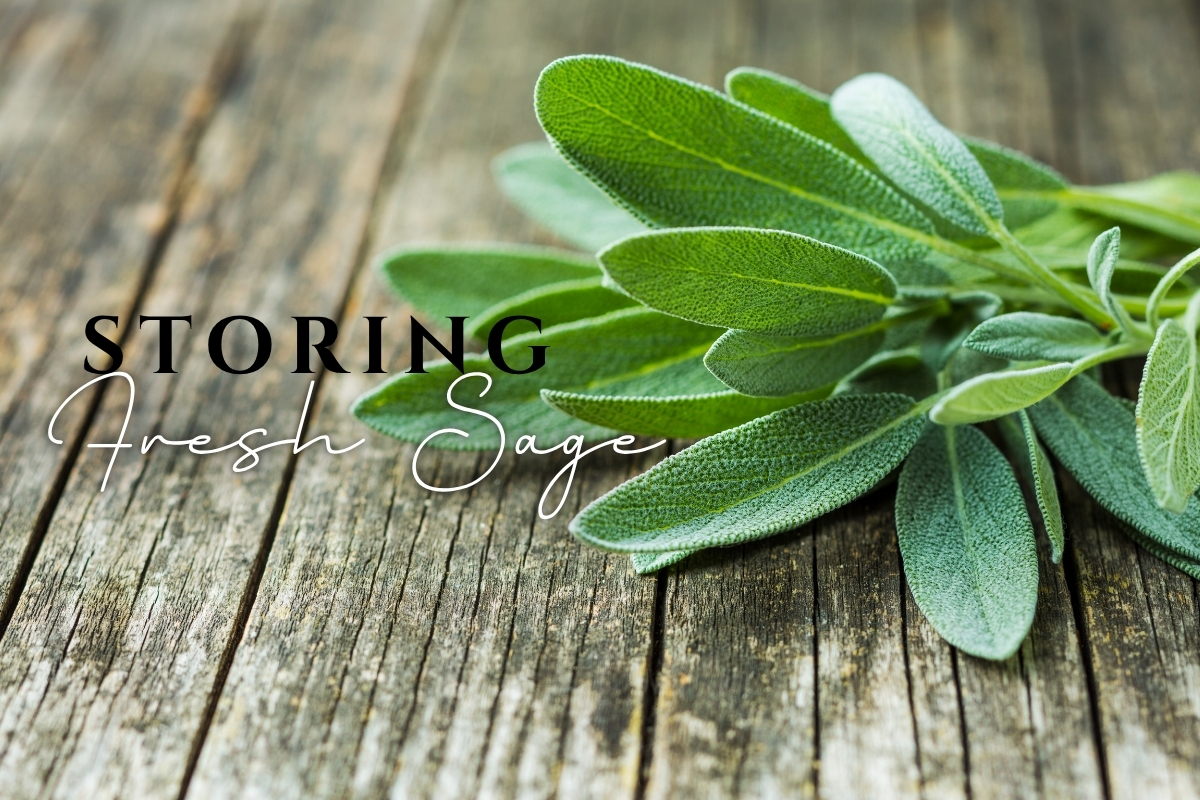How to Prep, Cook, and Store Fresh Sage
This post may contain affiliate links
Fresh sage is a delicious herb for use in cooking, especially during the cooler months. Its earthy flavor brings warmth and depth to so many dishes. With a few simple tips, you can prep, cook, and store fresh sage with confidence and make the most of this seasonal favorite in your kitchen.

What is Sage?
Sage (Salvia), the largest genus in the mint family (Lamiaceae), comprises over 900 aromatic, mostly perennial species, many of which are native to the Mediterranean region. Salvia officinalis, commonly known as sage, has been used in both culinary and medicinal traditions worldwide for a long time. Traditionally, sage has been valued for treating digestive issues, respiratory problems, infections, and inflammatory conditions.
Health Benefits of Sage
Modern research highlights sage’s wide-ranging pharmacological effects. Its essential oils—rich in compounds like thujone, camphor, and 1,8-cineole—possess antioxidant, anti-inflammatory, antimicrobial, and anticancer properties. These bioactive compounds, including flavonoids, polyphenols (like rosmarinic and caffeic acid), and ursolic acid, contribute to sage’s potential in managing serious conditions such as:
- Obesity – May support metabolism and fat breakdown.
- Diabetes – Helps regulate blood sugar levels.
- Depression – Shows mood-enhancing and neuroprotective effects.
- Dementia – Contains compounds that may improve memory and brain function.
- Heart disease – Offers antioxidant and anti-inflammatory support for cardiovascular health.
- Lupus – May help reduce inflammation and immune system overactivity.
- Cancer – It contains antioxidants that may help prevent cellular damage.
Sage is particularly notable for its high antioxidant activity, especially in S. officinalis, making it a promising candidate for natural therapeutic applications and future drug development.
Selecting Fresh Sage
Sage is a hardy perennial from the mint family, so it’s available year-round—and honestly, once you start using it in your cooking, you’ll want to keep it around. The plant has woody stems and soft, grayish-green leaves, and while it’s native to the Mediterranean, it’s now grown in gardens and pots all over the world.

If you’re thinking about adding sage to your herb setup, whether you grow herbs inside or out, good news, it’s easy to grow. But if you’re like me and usually pick it up fresh from the store, here are a few things I look for when buying:
- Look for fresh, fragrant bunches. The leaves should feel soft, not brittle, and smell nice and earthy.
- Check the color. A healthy bunch will have light to dark green leaves—skip any with black or brown spots.
- Avoid dried-out or soggy leaves. If the leaves look shriveled or the container is full of moisture, it’s best to pass. Too much water can lead to mold and make your sage go bad faster.
Fresh sage adds so much flavor and depth to dishes, so it’s worth choosing the best bunch every time.
“I have a very small kitchen but I still reserve a corner of counter space to grow fresh sage. I make a lot of fresh pasta and there is simply nothing better than a handful of fresh sage cooked briefly in butter and sprinkled over a plate of homemade pasta. It has a warm flavor that’s perfect for cold weather comfort food.”
— Rebecca Blackwell, A Little And A Lot
The Taste of Sage
Sage has a bold, earthy flavor that’s slightly peppery with hints of lemon, eucalyptus, and mint. It’s deeply aromatic and can be a bit bitter when raw, but once cooked, it mellows into a warm, savory taste that pairs beautifully with rich or roasted dishes. It is aromatic and often associated with the holidays in the United States.
It’s great with poultry, potatoes, squash, and creamy sauces—it adds a cozy, almost woodsy note that rounds out a meal. A little goes a long way, so start with a small amount and build from there.
“It isn’t Thanksgiving to me unless I have fresh sage to stuff under the skin of my turkey. Fresh leaves add immense flavor to poultry. To me, sage smells woody and green. The fresh leaves are soft and almost velvety. I like to rub my fingers over them.”
— Jennifer Osborn, Kitchen Serf
Cleaning Sage
Cleaning sage is quick and easy, and it helps preserve its flavor and freshness. Here’s how I do it.

- Separate the leaves – Gently pull the leaves from the woody stems. Discard any discolored or wilted leaves.
- Rinse under cool water – Place the leaves in a colander or bowl and rinse under cool, running water to remove dirt or debris.
- Swish gently – If the leaves are very dusty, you can swish them in a bowl of water to help loosen any residue.
- Drain well – Shake off excess water and lay the leaves out on a clean kitchen towel or paper towel.
- Pat dry – Gently pat the leaves dry with another towel, being careful not to bruise them.
- Air-dry briefly – Let them air-dry for a few more minutes to remove any remaining moisture before using or storing.
Clean sage is ready to chop, fry, infuse, or store depending on how you plan to use it.
Storage Suggestions
Sage is a hardy herb, like oregano, thyme, or rosemary. It is less likely to wilt than soft herbs like cilantro, dill, basil, or parsley, but it must be stored properly. This will preserve its flavor and texture.

- Refrigerator (short-term) – Wrap unwashed sage in a damp paper towel and place it in a resealable bag or an airtight container. Store in the fridge for up to 5–7 days.
- Freezing (long-term) – Chop the leaves and freeze them in olive oil using an ice cube tray. Once frozen, transfer the cubes to a freezer bag—great for soups and sautés.
- Drying – Tie the stems into small bundles and hang them upside down in a cool, dry spot for about 1–2 weeks. Once fully dry, crumble the leaves and store them in an airtight jar away from light and heat.
Each method helps capture the rich aroma and flavor of sage, allowing you to enjoy it even after harvest.
Culinary Uses For Fresh Sage
Fresh sage for many is a go-to herb in the kitchen because of the earthy, slightly peppery flavor it brings to so many dishes. Sauté whole sage leaves in a bit of butter until they’re crispy—then drizzle that fragrant butter over pasta or roasted squash for a simple but flavorful finish. Or when making roast chicken or pork, chop up a few fresh leaves to add to the rub or stuffing, it gives everything that warm, cozy aroma that reminds me of holiday meals.

Or add sage to hearty soups and stews; just a few leaves during the simmering process bring out a deeper, savory richness. You can even mix finely chopped sage into biscuit or bread dough for a herby twist. You can also toss sage into brown butter with a little Parmesan to finish a risotto or pasta, parsini salad, and burrata salad. Just a little goes a long way, so always start small and adjust to taste.
“My favorite quick and easy sauce is sage-infused brown butter. It smells amazing and makes everything taste just a bit fancier. Brown the butter in a saucepan. When it’s done, pull it off the heat and toss in some thinly sliced sage, swirling the pan as it bubbles and foams. The fried sage can be used as a garnish to make your plate look as fancy as it tastes.”
— Renee Gardner, Renee Nicole’s Kitchen





